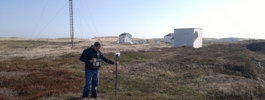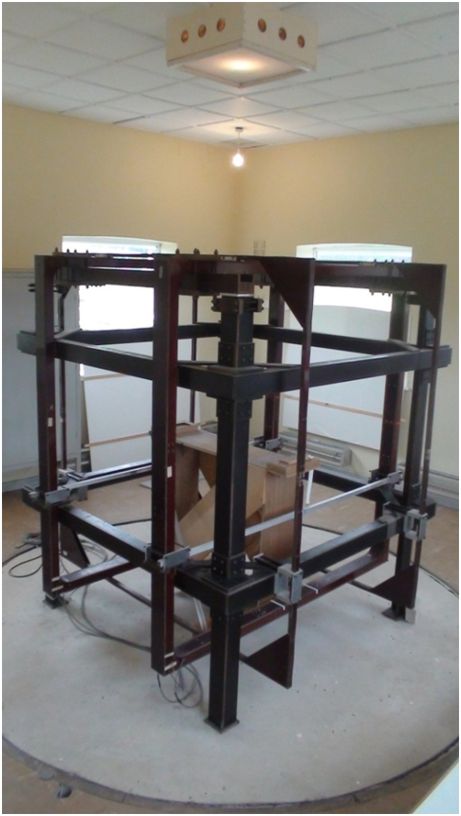Hartland Magnetic Observatory - Low-field Calibration Facility
Hartland Magnetic Observatory is located close to the North Devon village of Hartland. The observatory is operated by the British Geological Survey, part of the Natural Environment Research Council, for the purpose of continuous geophysical monitoring.
When the observatory was built in 1956, it was equipped with a pair of symmetrical calibration coils in a dedicated non-magnetic building, Test Hut 1. These coils were wound on square formers (approximately 2m x 2m across) mounted parallel to each other and oriented to produce a bias field in the vertical (Z) direction.
The original purpose of the coils was to calibrate BMZ magnetometers by simulating a range of amplitudes of the vertical component of the geomagnetic field.
In 1983, as part of the test programme for the magnetometer experiment on board the United Kingdom Satellite (UKS) of the Active Magnetospheric Particle Tracer Explorer (AMPTE) programme, engineers from Rutherford Appleton Laboratory modified the Z-coils to create a low-field facility (LFF).
Four sets of parallel coils were added to generate bias fields in the horizontal plane as well as vertically. Two coil sets were aligned approximately North-South (N-S Main coils and N-S Calibration coils) and two East-West (E-W Main coils and E-W Calibration coils).
Since the UKS magnetometer was designed to measure low magnetic fields in the solar wind (up to a few nT), the Z, N-S Main and E-W main coils were used to cancel out the natural magnetic field in the centre of the coil system, while the N-S Calibration and E-W calibration coils were used to generate calibrating fields.
Test Hut 1 provides an indoor, temperature regulated test environment with mains electricity points. Coil currents are manually controlled using Time 9818 current sources.
Variations in the ambient field are monitored on-site in real-time, allowing bias adjustments to be made to maintain low-field. Since 1983, the coils have been used to calibrate compasses and magnetometers for the oil and avionics industries.
Coil Specifications
Contact
Contact: Christopher Turbitt



